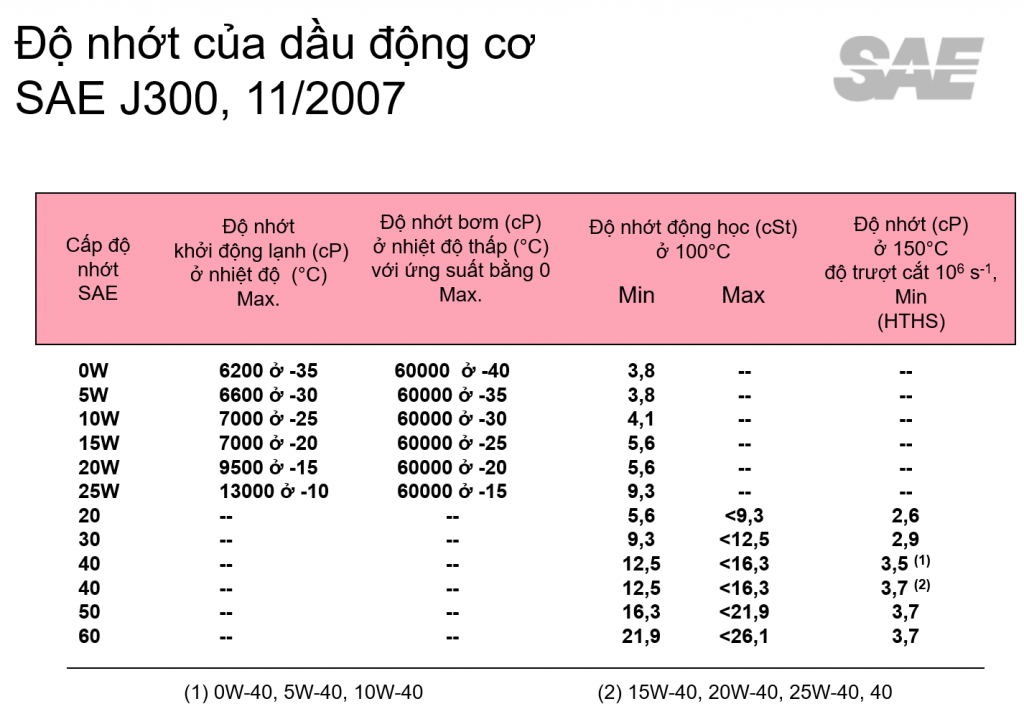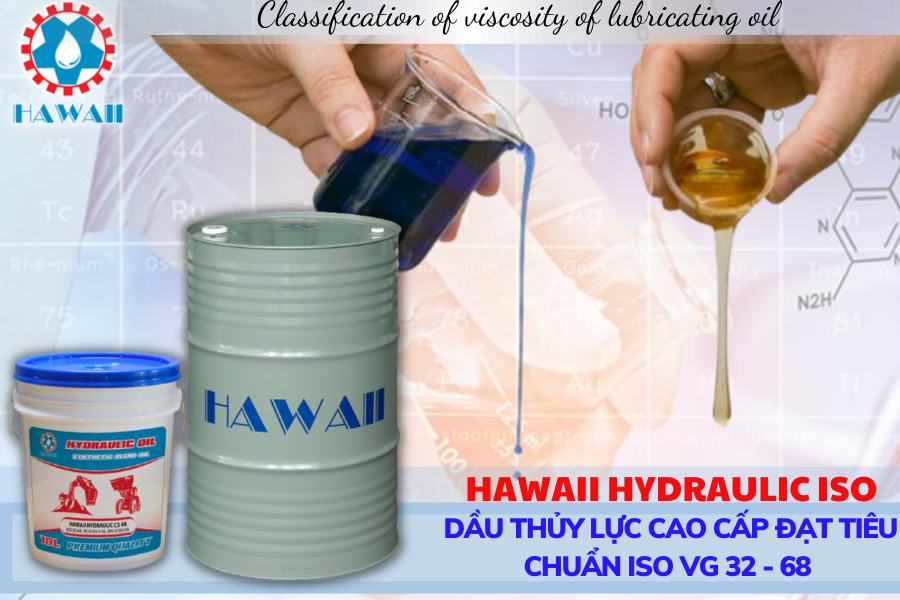
Classification of viscosity of lubricating oil
According to the Society of Tribologist and Lubrication Engineers (STLE), viscosity is the most important physical property of a lubricating oil. It is the first parameter that oil analysis laboratories perform to evaluate the condition of the oil and its lubricating performance.

Let’s learn about viscosity and viscosity classifications of lubricating oils with Hawaii Oil through the following article, stay tuned!
I. VISCOSITY OF LUBRICATING OIL
Lubricating oil viscosity is defined as a quantity that characterizes the anti-flow properties of a lubricant and is often understood simply as the viscosity or fluidity of the oil.
Viscosity is measured in two ways, kinematic viscosity and dynamic (absolute) viscosity with different meanings.
1. Kinematic viscosity:
The kinematic viscosity of a lubricating oil is a characteristic of the oil’s resistance to flow under the action of gravity.
Imagine we have a turbine oil tank and the other one contains gear oil, when tilting the tank to pour oil we will see turbine oil flow faster (under the effect of gravity) because the flow rate depends on the kinematic viscosity of each oil.

The kinematic viscosity of the oil is measured with a capillary viscometer placed in a vessel kept at a reference temperature of 40oC or 100oC according to the method ASTM D445 or ISO 3104 as shown in the figure below.
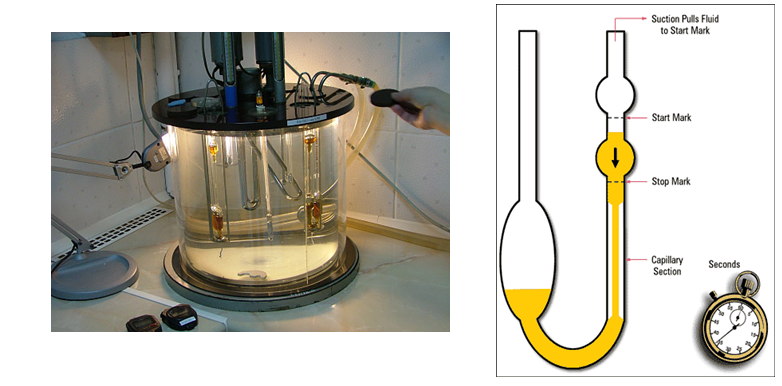 Lubricant is sucked in from the right branch of the U-shaped tube up to the START line, then the suction is released and the oil will flow back due to gravity, the capillary is narrow to control the oil flow rate. The kinematic viscosity of the oil will be calculated according to the oil flow time from the START line to the STOP line and the calibration constant of the tube in centiStoke (cSt) or mm2/s in the SI system of units.
Lubricant is sucked in from the right branch of the U-shaped tube up to the START line, then the suction is released and the oil will flow back due to gravity, the capillary is narrow to control the oil flow rate. The kinematic viscosity of the oil will be calculated according to the oil flow time from the START line to the STOP line and the calibration constant of the tube in centiStoke (cSt) or mm2/s in the SI system of units.
Industrial lubricants are usually measured kinematically at 40oC because that is the basis of the ISO 3448 viscosity classification system, while engine oils are measured kinematically at 100oC according to the viscosity classification SAE J300 oil.
2. Dynamic viscosity
Dynamic viscosity is a measure of the oil’s resistance to flow under an external force.
Dynamic viscosity was measured with a rotary viscometer according to the Brookfield method ASTM D2983 (bottom figure). The lubricant is stored in a glass tube placed in an insulated vessel held at a specified temperature, a metal rod stirs the oil at a specified rate. The dynamic viscosity of the oil is calculated from the torque measurement for rotating the stirring rod in centiPoise (cP) or mPa.s units in the SI system of units.
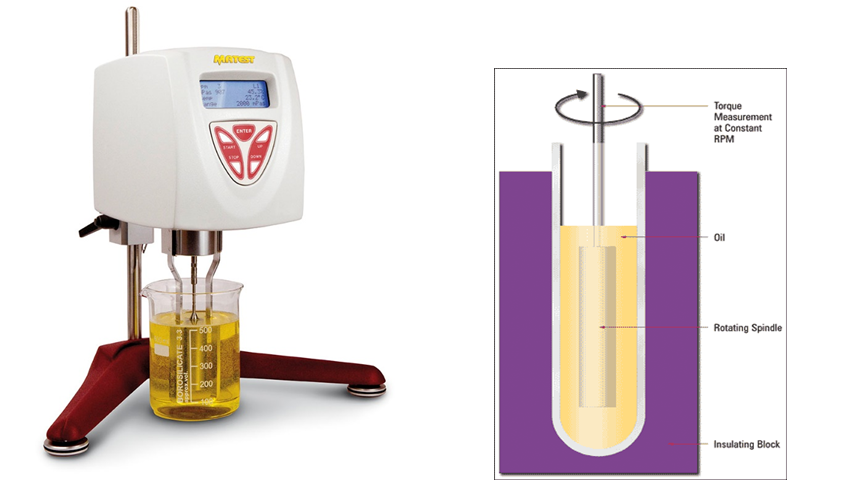
Dynamic viscosity is used primarily in the design of winter (W) engine oils and multigrade engine oils.
Kinematic viscosity and dynamic viscosity are related by the following expression:

II. CLASSIFICATION OF LUBRICATING OIL VISCOSITY:
The purpose of viscosity classes is to establish a system of viscosity grades within a limited viscosity range appropriate to specific applications (industrial or automotive) and specific operating conditions (temperatures). , speed, load) so that lubricant manufacturers and suppliers, machine designers and users have a common (standardized) basis for specifying or selecting the appropriate lubricant.
a. ISO 3448 industrial oil viscosity classification:
ISO VG stands for “International Standards Organization Viscosity Grade” which is a classification of the viscosity of industrial oils according to the ISO International Organization for Standardization.
Each ISO VG viscosity grade is represented by a rounded number closest to the mean kinematic viscosity of the oil at 40oC with a range below and above 10% of that average. For example oil with ISO VG 10, its viscosity is in the range of 9 -11 cSt.
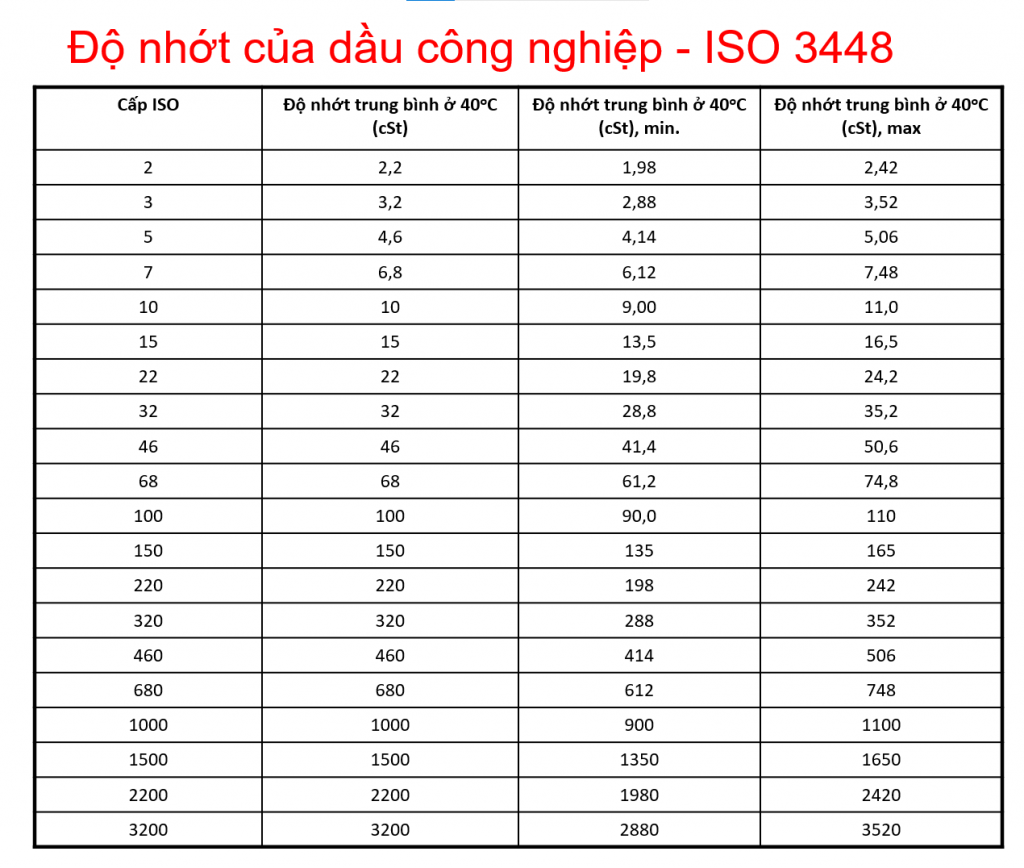
Thus, each industrial lubricant product is usually associated with ISO VG viscosity, for example, Unioil Lubricatns HAWAII HYDRAULIC ISO product has a viscosity from ISO VG 32 to ISO VG 68. HAWAII HYDRAULIC ISO is premium quality hydraulic oil formulated from refined mineral oils and enhanced thermal stability and anti-wear additives, suitable for extreme pressure hydraulic systems, operation in harsh, high temperature conditions.

HAWAII HYDRAULIC ISO is premium quality hydraulic oil
b. Viscosity classification of engine oil SAE J300:
SAE stands for Society of Automotive Engineers which is the American Society of Automotive Engineers.
The W grades are specified for winter use (Winter), the non-W grades are for summer use, e.g. SAE 10W is a winter single grade oil, SAE 40 is a summer single grade oil. .
Multigrade engine oil, eg. SAE 0W-40 is a year round oil with a low temperature viscosity that meets the requirements of SAE 0W and a viscosity at 100°C in accordance with SAE 40.
c. Viscosity classification of automotive gear oils SAE J306:
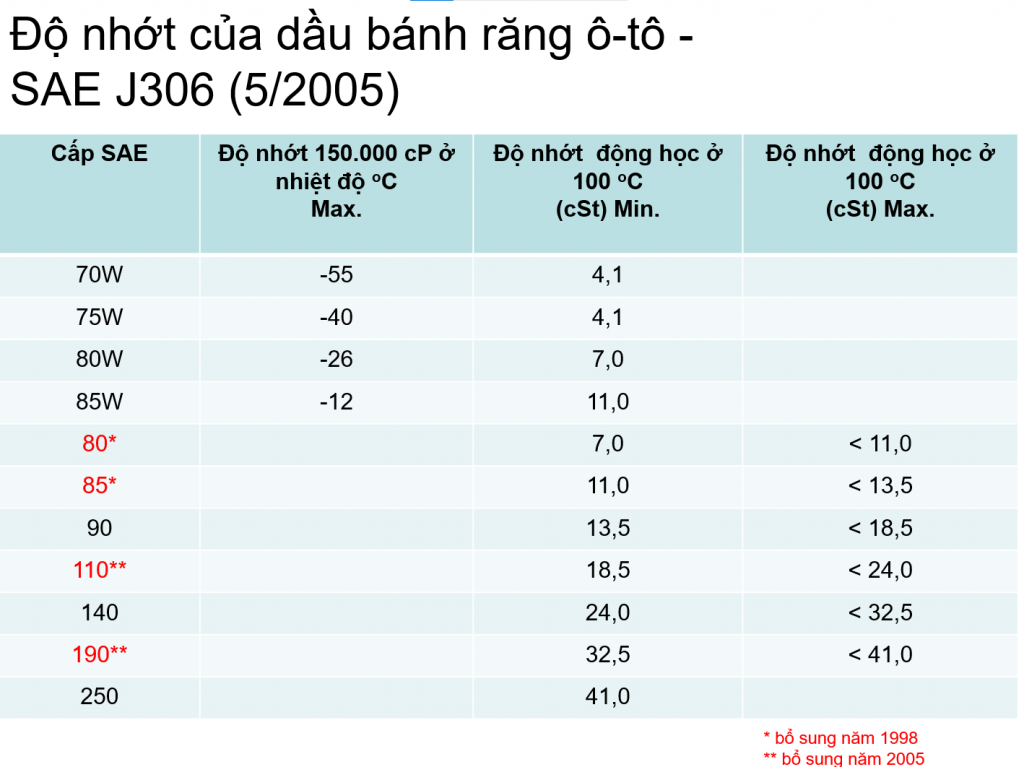
Similar to engine oils, automotive gear oils (gearbox and differential-drive oils) also come in winter grades W, summer non-W and multigrade grades, eg. SAE 85W-140.
2. Compare viscosity grades
The fact that there are many viscosity classifications with many viscosity grades, especially the viscosity classifications of motor oils and automotive gear oils are both SAE, so it can be confusing.
It should therefore be emphasized that only the viscosity of an ISO VG industrial oil is close to the kinematic viscosity measurement of that lubricant at 40oC.
SAE viscosity grades are symbols only, not a measure of viscosity, nor are they indicative of the ambient temperature at which the oil can be used.
The table below with kinematic viscosity measurements at 40°C of the different viscosity grades in each of the ISO VG, SAE J300 and SAE J306 viscosity classes will give us a better understanding of the viscosity grades, such as ISO VG 220 also has a viscosity within the range of SAE 50 or SAE 90, not “220 is thicker than 50 or 90”; non-SAE 75W is denser than SAE 50.

Of course, we all know that different lubricants are designed with different base oil and additive formulations to meet specific operating requirements, so the viscosity equivalence of Just because different oils are different does not mean that they can be effectively used interchangeably.
EPILOGUE:
Hopefully, the sharing of Hawaii Oil will help you better understand the viscosity and viscosity classifications of lubricating oils so that you can choose the right lubricant for your business machinery.
If you have a need to use or learn more, please contact the hotline below for advice and support as soon as possible:
KHANG AN CHEMICALS JOINT STOCK COMPANY:
- 111 North Bridge Road, #05-14 Peninsula Plaza Singapore 179098
- info@hawaii-oil.com info@hawaii-lubricant.com
- Hotline: 0902599181
- Website: www.hawaii-oil.com
- facebook.com/HawaiiOil

